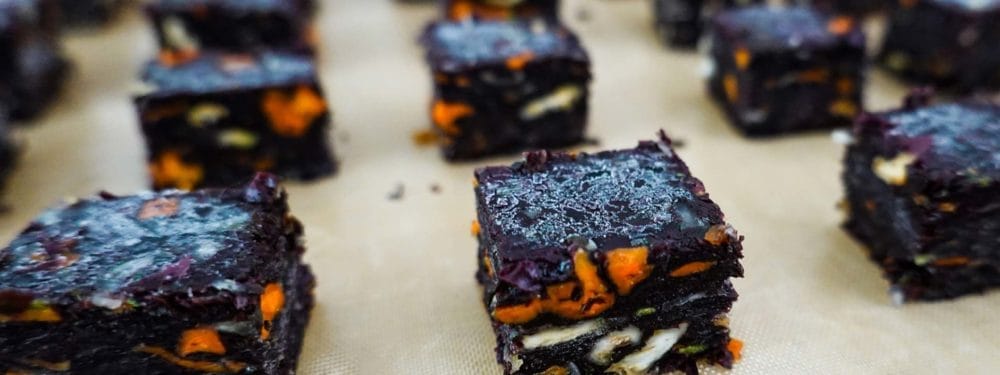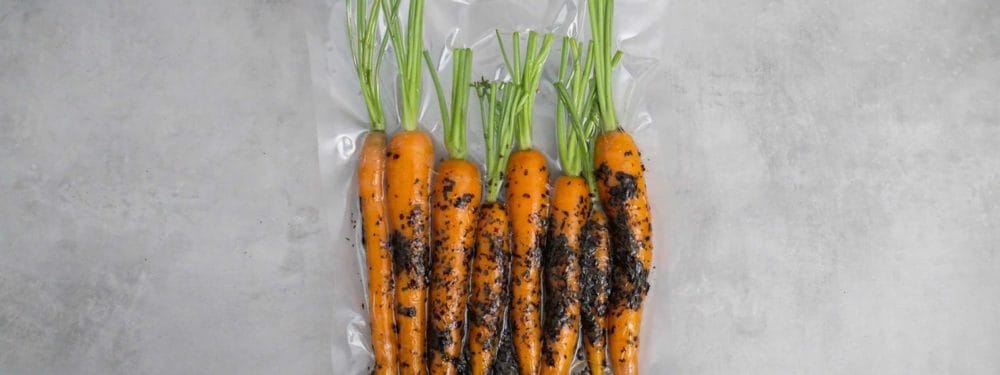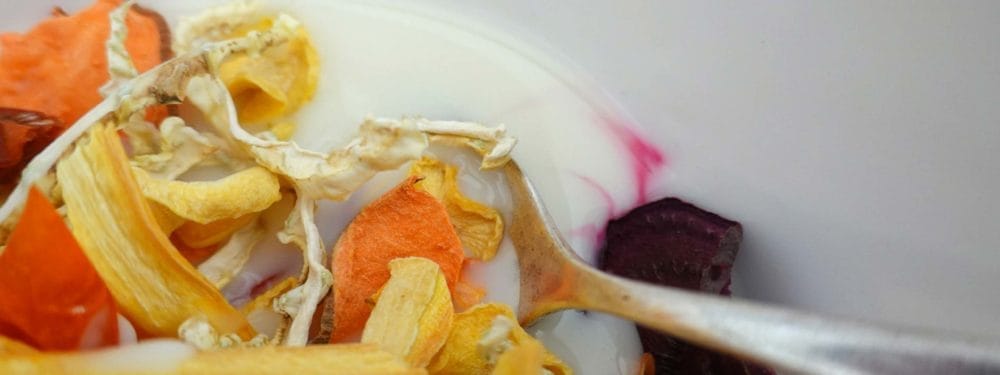Vegetables can mold….
Vegetables fascinate us. What for centuries was relegated to a side dish in upscale gastronomy has for some years now no longer been the focus of attention only for individual experts, but is the star in more and more restaurants. The range and quality of vegetarian products is also growing in the supermarket. Vegetarian “meat substitutes” are a special and interesting category here.

Food Lab Alchemy: Turning Vegetables into Meat
We have developed a soft spot for high-quality meat alternatives and are always trying to replace classic meat products with a vegetarian version. All senses play together in the process. In addition to taste and smell, texture and appearance must also be right for the product to be convincing. To achieve deep flavors, fermentation is a very helpful process, and it’s one that we’re fond of as well. For this project we combine our enthusiasm for vegetables, meat substitutes and fermentation and make vegetable charcuterie. Vegetables what? Charcuterie means the high-quality preservation or refinement of meat. In short: we make vegetable sausage. We do not chop the vegetables and put them in a casing, but we process and ripen them as a whole, so called vegetable ham.
The magic mushroom
Our newfound love of mushrooms is also served in the process, as the key to this creation is a mold. Not just any mold, but Koji (Aspergillus Oryzae). A fascinating creature especially from a food lab perspective. We were inspired by the Veg Alp project. Esther Kern and Jann Hoffmann have made a vegetarian alternative to Bündnerfleisch based on beet. This looks brilliant and according to the reports, it is also absolutely convincing in terms of taste. We dedicated ourselves to this project in Frankfurt and Hamburg. In Frankfurt, a private oven was turned into a fermentation chamber without further ado; for the lab in Hamburg, we took a more professional approach and purchased a chamber in order to be able to optimally adjust the conditions for the fungus. Optimal means warm and humid. In addition to various root vegetables, we need the mold for the vegetable sausage. From mimiferments from Berlin we could get the koji mushrooms. We ordered three liquid koji products as well as dried koji on buckwheat and received pomace from soy sauce production for further experimentation.

Vegetables + mold + ripening time = vegetable charcuterie
Black radish, Jerusalem artichoke, turnip, beet, yellow beetroot, celery and radish are our basis for the production of our first vegetable sausage series. In the production we basically follow the classic charcuterie production. Besides flavor, the main issue here is texture, and to get that Rich Shih and Jeremy Umansky recommend treating vegetables like meat in their book Koji Alchemy.
That was exactly the key to Noma’s Vintage Carrot dish, for which a carrot is pan-fried like a steak while being arroded, that is, doused with liquid butter and gravy juices. Preparing vegetables is not always about treating vegetables like meat, but they should definitely always receive at least the same attention as meat. Because this is increasingly the case, there are constantly new exciting and flavorful dishes and products completely without meat but with just as much flavor and novel textures that are more reminiscent of meat.
You have to rub the salt into the root
So we carefully wash the vegetables and brush the last sand from the fine roots and cook them in lightly salted water. We cook the vegetables just enough so that they still retain their shape, but are completely soft at the core without falling apart. Then we let it cool to room temperature and peel it.

Now you could smoke the vegetables to bring in the flavors known from sausage, but we complete the process first pure. Then we rub each tuber with salt, also here the salt can be mixed with spices to bring in additional flavor but again we opt for a pure variant. The amount of salt can be precisely determined and is below the usual amount for meat. (1.75% instead of 3% according to the Equilibrium Method (EQM)). However, we relied on our intuition without calculating exactly.
After careful rubbing, we wrap everything tightly in cling film. Thus prepared, the roots lie in the refrigerator for three days, depending on the size, the process can be extended. After the 3 days we wrap the vegetables from the foil and can see that all varieties have gained firmness. The salt has pulled the liquid out of the tubers over the last few days and the vegetables have gained texture.
We start the first tests with the liquid and the dry product. To get a wide selection of which mushroom grows optimally on which vegetable, we infect the vegetables with two different koji mushrooms each.
Let it mold
We place the infected tubers in our fermentation chamber. Here, a constant temperature of 30 °C is generated with a constant humidity of 80 %. This allows the fungus to grow optimally. Under these conditions, the tubers remain in the chamber for 48 hours, and every twelve hours we take a photo to document the spread of the fungus. After 48 hours, unfortunately, we notice that the black radish has formed a yellowish discoloration. Since we are not quite sure if the mold is benign, we remove the radish from the project. Presumably, however, the koji only formed spores.
For the other white moldy products we stop the process by killing the fungus in the dehydrator at 60 °C. Then we set the temperature to 40 °C and let the vegetables dry. During the drying process it is important to knead the vegetables again and again. This distributes the moisture and allows for uniform structural development. We dry the vegetables until they lose at least 50% of the initial weight. A truly fascinating process. The Koji exudes an intense aroma reminiscent of charcuterie or the white noble mold of a salami.

Do not be afraid of fine mold
Tasting a homegrown mold takes some getting used to. Sure we know that from cheese, but still we have greater respect regarding the edibility of mold than, for example, insects.
But the overcoming is rewarded with a novel taste experience. The intrinsic flavor of the vegetable was intensified, accompanied by koji flavors. The texture is also fascinating. Soft, chewy, velvety and still slightly juicy, it has a bit of a raw ham feel to it – a truly brilliant product. We are fond of vegetable sausage. And we will also continue working with Koji.
Vegetables can mold – and how!





